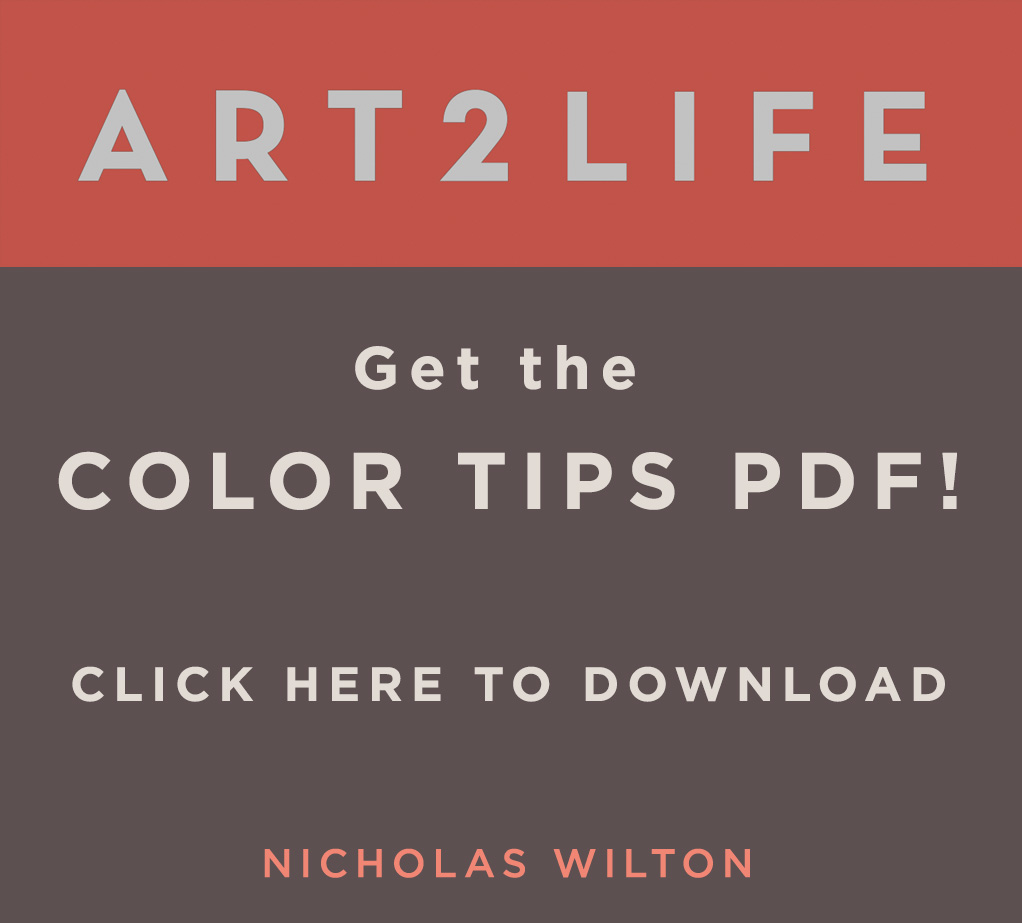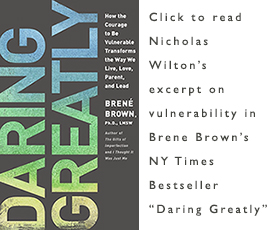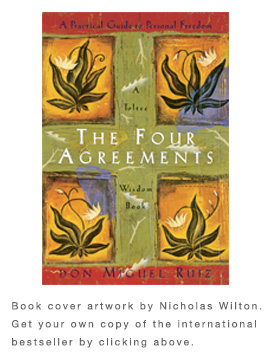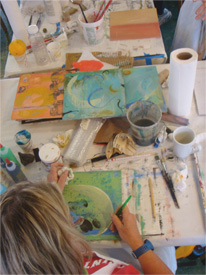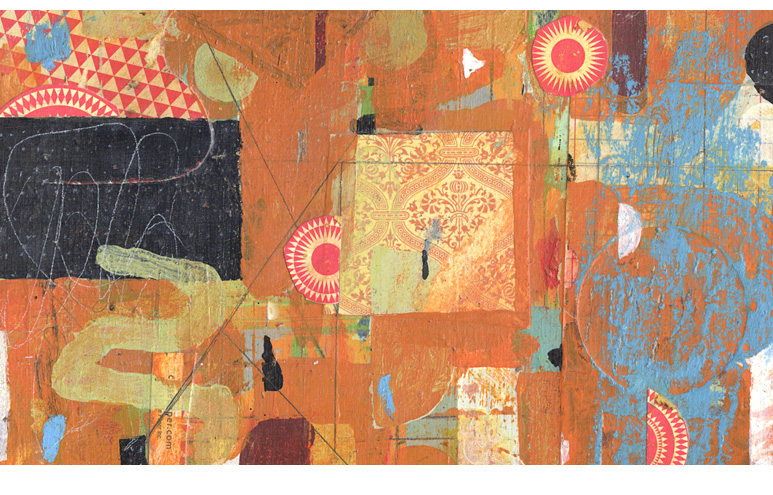 It seems once you arrive at a good place with your work, in no short time, this place begins to lose its appeal. Over time it even can become boring. The only way out of this is to change our work. Knowing how or when to change is not always apparent. This can be tiring, scary and bewildering. It seems we never can just arrive and stay happily ever after.
It seems once you arrive at a good place with your work, in no short time, this place begins to lose its appeal. Over time it even can become boring. The only way out of this is to change our work. Knowing how or when to change is not always apparent. This can be tiring, scary and bewildering. It seems we never can just arrive and stay happily ever after.
This might be why making art is so challenging for people to start – certainly it plays into why so many artists find making art unsustainable. Do you ever wonder why you signed up for a lifetime of pushing this big rock always uphill? I do.
There is, however, a way out. And this way out is called change. Yes, it is hard, but even with its inherent uncertainty it is far more palatable than the onset of boredom. This state is worrisome because like an incoming tide at night, it happens so slowly that you sometimes don’t even realize it is happening. Boredom in your practice can be incredibly time consuming and emotionally draining. Going through the effort of making art with all its costs and time only to later realize that you never really liked doing it or where you ended up can be super depressing. Sometimes it can feel so bad that you can feel like giving up art entirely.
So it is important to catch boredom early and instigate change. But how do you know it is time?
I have a difficult time recognizing when it is time to change and shift my art into a new direction. Over the years however I can look back and see a pattern in the clues that slowly begin to arrive. Most of the time I have ignored them, thinking I can avoid the inevitable. I try now to just be proactive as soon as the first signs of needing to change begin to arrive. It saves me a lot of time and heartache.
Here are the 3 clues that consistently show up. When these 3 arrive they help me to know that fortunately, unfortunately it is time to change. Maybe they can help you too.
Change in your Art might be needed when…
1 You look more and more outside your Art for reassurance.
When my work loses it’s potency and I am too afraid to change it, I tend to focus on what the gallery, or collectors or even friends have said positively about my work. I must be doing well because I sold this or someone said that positive thing about my painting, is a thought that might cross my mind. I even re-read favorable emails to bolster my sense that I am still happily on course. The problem is, of course, that it actually is never enough. In Art it should never be about what everyone says, or how or who bought your art or how many likes you received on facebook. The resting place is only found by actually making your Art and making it more and more like you. Creating Art that you love, even if that feeling only lasts for a week, thankfully, trumps all externalities.
2 Your day seems long.
Losing track of time might be the gold standard for what we are all after in our Art making. I often say this during the later stages of a workshop once everyone in the room is comfortable and have totally dropped into making Art. There is a palatable hum in the room, a collective ease and just this meditative focus that occurs when everybody is finally just making their art. The anxiety and the comparisons with the work of others fades away, and all that remains is color, wonder and curiosity. This state, this way of being like a kindergartener making art, is as good as it gets. It is also when time amazingly stops. If it has been awhile since this has happened to you, then more often than not your art is signaling to you that it needs to change.
3 You compare yourself to others
It is important to look at art that amazes you. It is dizzying to spin around the internet and see the myriad forms of expression that exist. I no longer can do this anytime near my bedtime because I can’t sleep afterwards. It is that inspiring, that wonderful.
But the practice of looking at the art of others is very different from the practice of making your own. It can feel like we are progressing by spending inordinate amounts of time looking at others’ work but ultimately our work only really progresses when we are quietly standing in front of it. When our art loses its allure because it has remained the same too long in our eyes, then standing in front of it no longer fills us, stimulates us in the way it once did. So we go to the next best thing: Art, not made by us but by others. It seems logical but going, once again, outside yourself for the answers never really provides them. If you find yourself spending more and more time looking at other artists’ work it might just mean that boredom within in your own practice is setting in.
The challenge, the hard part of making strong art, is also its supreme gift. This idea that we can’t really game the practice of making art is a good one. We have to be truly into it, totally engaged to make something worthwhile, and though this can be challenging, you wouldn’t want it any other way.
To be reminded every day, every time we step into the practice of making art that we need to pay attention, right now, right here, is a blessing. It is a good thing to be vigilant to the fact that our time here is truly limited. What we make matters and will ultimately be measured by the changes that occurred, the risks taken and whether or not we truly were present at the time.
Have your experienced any of these 3 signs of boredom in your work? How have you dealt with them? I would love to read your thoughts on this.
In gratitude, Nicholas
